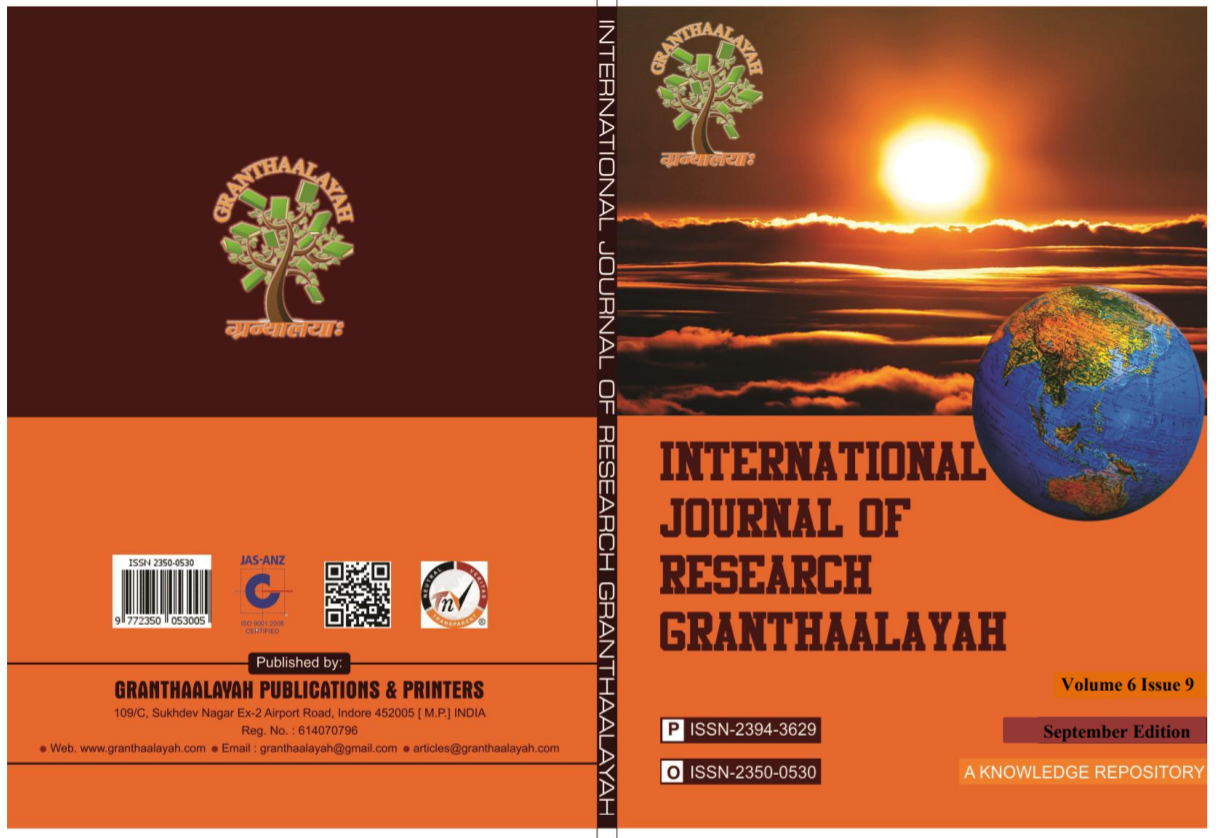THE MANAGEMENT OF EXCELLENT SCHOOLS IN INSTILLINGRELIGIOUS BEHAVIOR TO THE STUDENTS OFSTATE HIGH SCHOOLS IN NORTH SUMATERA PROVINCE
DOI:
https://doi.org/10.29121/granthaalayah.v6.i9.2018.1223Keywords:
Excellent Schools, Religious BehaviorAbstract [English]
The present research is aimed to determine the management model of excellent schools in instilling religious behavior to the students at state high schools in North Sumatra Province. This research is useful to enrich the scientific paradigm in the field of Management of Islamic Education, especially studies on the management of excellent schools in instilling religious behavior to their students.
The research used qualitative approach. The data collection techniques used observation, interviews and documentations. The data analysis used Milles and Huberman model, while the data analysis technique used data triangulation. The data were collected in excellent state high schools in North Sumatra with these following subjects: (1) SMA Negeri 2 Plus Martabe Sipirok, Tapanuli Selatan; (2) SMA Negeri 1Plus Matauli Pandan, Tapanuli Tengah; (3) SMA Negeri 2 Plus Panyabungan, Mandailing Natal. The results of this research indicate that, first: the success of management of excellent schools is influenced by inputs and processes in determining the output and outcome of the students’ religious behavior. Second, the management of excellent schools in North Sumatra involves all components of stakeholders, such as foundations, government, and communities, starting from start planning, implementation and supervision and financing. Third, the religious behavior of students in North Sumatra constitutes “aqidah/ Faithful Behavior”, namely the students’ faith in their religion; “Worship behavior”, namely the act of religious rituals in schools; “Almsgiving behavior”, as seen in discipline, cleanliness maintenance, mutual assistance in pluralism; “Ihsan/ Good Deeds Behavior”, namely the students’ sincerity in worships and almsgiving; “Knowledge Behavior”, namely the students’ knowledge of the teachings of their religion. Fourth, the management of excellent schools in North Sumatra in instilling the students’ religious behavior, that is integrated in the humanistic learning approach system, full-day school and boarding school programs.
Downloads
References
AbdurrahmanMas’ud, (2012) MenggagasFormatPendidikanNonDikotomikHumanisme religious Sebagai Paradigma Pendidikan Islam.Yogyakarta. GammaMedia.
Depertemen Pendidikan dan Kebudayaan, (1994) Pengembangan SMA Plus, Jakarta: Direktorat Jenderal Pendidikan Dasar dan Menengah.
Indonesia, P. R. (2005). PeraturanPresiden RepublikIndonesia Nomor7Tahun 2005 Tentang Rencana Pembangunan Jangka Menengah Nasional Tahun 2004-2009.
Koontz, H. (2010). Essentials of management. TataMcGraw-HillEducation.
Matthew B. Miles, A.MichaelHuberman,JohnnySaldana(2014)QualitativeDataAnalysis, London. Sage.
Nasional, S.P. (2003). Undang-Undang Republik Indonesia Nomor 20 Tahun 2003.Jakarta, Depertemen Pendidikan Nasional Republik Indonesia.
Pavlov, P.I. (2010). Conditioned reflexes: an investigation of the physiological activity of the cerebral cortex. Annals of neurosciences, 17(3), 136. DOI: https://doi.org/10.5214/ans.0972-7531.1017309
Pendidikan, B. S. N. (2007). Standar Proses untuk Satuan Pendidikan Dasar dan Menengah. Badan Standar Nasional Pendidikan.
Pendidikan, P. (2007). Peraturan Menteri Pendidikan Nasional Republik IndonesiaNomor63 Tahun 2009.
Psacharopoulos, G. (Ed.). (2014). Economics of education: Research and studies. Elsevier.
Robert K. Yin, (2016) Qualitative Research from Start to Finish, Second Edition, The Gulid Ford Press. New York. London.
Sahlan,A.(2010). Mewujudkan Buday Religiusdi Sekolah: Upaya Mengembangkan PAI dari Teori keAksi. UIN-Maliki Press.
Sergiovanni,T.J.(1987). The Principal ship: A Reflective Practice Perspective. Publication Sales, Allyn andBacon,LongwoodDivision, 7 Wells Avenue, Newton, MA 02159.
Talizuhu Ndara, (2010) Teori Budaya Organisasi, Jakarta: RinekaCipta.
Umar, H. N. (2014). Deradikalisasi Pemahaman Al Quran dan Hadis. Elex Media Komputindo.
Downloads
Published
How to Cite
Issue
Section
License
With the licence CC-BY, authors retain the copyright, allowing anyone to download, reuse, re-print, modify, distribute, and/or copy their contribution. The work must be properly attributed to its author.
It is not necessary to ask for further permission from the author or journal board.
This journal provides immediate open access to its content on the principle that making research freely available to the public supports a greater global exchange of knowledge.






























